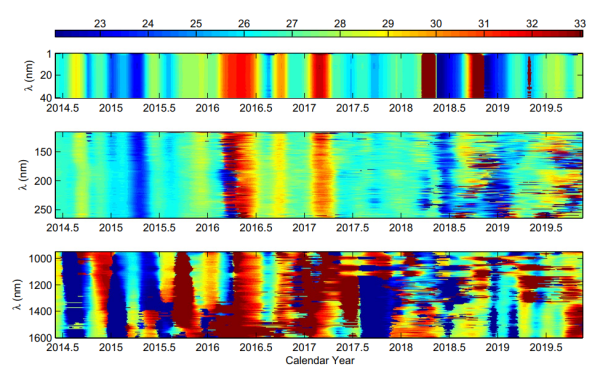Solar rotation, a fundamental characteristic of the Sun, is second only to the Schwabe cycle, an approximately 11-year cycle, in prominence. The energy and matter of the solar atmosphere originate from the sun’s interior, driving the rotation of the solar atmosphere from the inside out.
Historically, based on the sun’s overall behavior, it was expected that the rotation of the upper solar atmosphere would not exceed that of the lower solar atmosphere. Early studies supported this view. However, with the accumulation of observational data, recent studies have suggested a contradictory perspective: the rotation of the corona, the sun’s outermost layer, is faster than that of the underlying photospheric atmosphere.
These two conflicting views have sparked a scientific debate, leaving the faster rotation of the corona compared to the underlying photospheric atmosphere an unsolved mystery. As researchers continue to delve into this enigma, stay tuned for more updates on this fascinating aspect of solar physics.
A recent study published in Scientific Reports by Associate Researcher XIANG Nanbin from the Fuxian Solar Obsevatory of Yunnan Observatories, Chinese Academy of Sciences (CAS), along with Researcher ZHAO Xinhua from the State Key Laboratory of Space Weather, National Space Science Center, CAS, and Professor DENG Linhua from Yunnan Minzu University has made progress in understanding the relationship between coronal rotation and magnetic structures and the driving force behind variations in solar coronal rotation.
In this study, researchers have discovered that solar activities, both violent and slow, are influenced by magnetic activities. These activities occur at various altitudes within the solar atmosphere and are linked to distinct categories of magnetic fields.
The study focused on four categories of solar small-scale magnetic elements. These include elements with no correlation to the sunspot cycle, elements with anti-correlation to the sunspot cycle, elements transitioning from anti-correlation to correlation with the sunspot cycle, and elements in-phase with the sunspot cycle. Using a wide range of solar spectral irradiances, the researchers explored the relationship between coronal rotation and magnetic field structures.
For the first time, the impact of different magnetic structures on the temporal variation of rotation for the coronal atmosphere during different phases of the solar cycle has been uncovered. The study found that during the solar maximum, the temporal variation of rotation for the coronal plasma atmosphere is primarily controlled by the small-scale magnetic elements with anti-correlation with the sunspot cycle. However, during periods of relatively weak solar activity, it is dominated by the combined effect of both the small-scale magnetic elements with anti-correlation with the sunspot cycle and those elements in-phase with the sunspot cycle.
This research not only provides an explanation for the inconsistent results of previous studies on the rotation of the corona but also reveals why the coronal atmosphere rotates faster than the lower photosphere. This discovery marks a significant advancement in our understanding of solar activities and their impact on our solar system.
This work is supported by the National Natural Science Foundation of China, the Strategic Priority Research Program of Chinese Academy of Sciences, the “Yunnan Revitalization Talent Support Program” Young Talent Project, the CAS ‘Light in Western China’ Program, Yunnan Fundamental Research Projects, and Project Supported by the Specialized Research Fund for State Key Laboratories.


Figure 1,Temporal variation of the rotation periods for all SSIs considered, image by XIANG.
Contact:
XIANG Nanbin
Yunnan Observatories, CAS
E-mail:nanbin@ynao.ac.cn